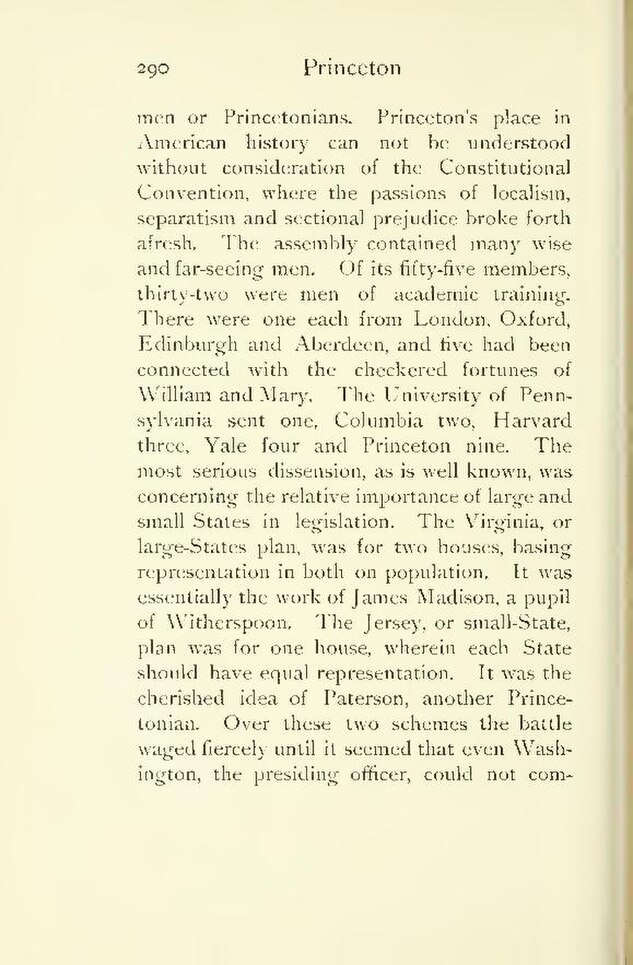- men or Princetonians. Princeton's place in
American history can not be understood without consideration of the Constitutional Convention, where the passions of localism, separatism and sectional prejudice broke forth afresh. The assembly contained many wise and far-seeing men. Of its fifty-five members, thirty-two were men of academic training. There were one each from London, Oxford, Edinburgh and Aberdeen, and five had been connected with the checkered fortunes of William and Mary. The University of Pennsylvania sent one, Columbia two, Harvard three, Yale four and Princeton nine. The most serious dissension, as is well known, was concerning the relative importance of large and small States in legislation. The Virginia, or large-States plan, was for two houses, basing representation in both on population. It was essentially the work of James Madison, a pupil of Witherspoon. The Jersey, or small-State, plan was for one house, wherein each State should have equal representation. It was the cherished idea of Paterson, another Princetonian. Over these two schemes the battle waged fiercely until it seemed that even Washington, the presiding officer, could not com-
